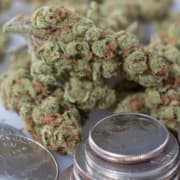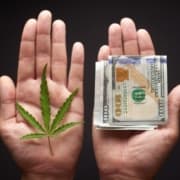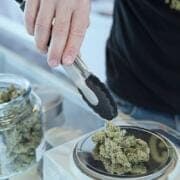Hemp vs. Marijuana & The 2018 Farm Bill
One of the most important and frequently misunderstood distinctions in the cannabis industry is that of hemp vs. marijuana. Semantically, hemp refers to cannabis bred for a variety of commercial items & industrial uses, including paper, clothing, biodegradable plastics and biofuel. Marijuana, on the other hand, is a slang term describing cannabis strains bred for the potent, resinous glands that grow on the flowers and leaves[1].
From a legal perspective, the distinction is much more complicated. The delineation is based on the levels of the most commonly known cannabinoids[2]: cannabidiol (CBD) and delta-9 tetrahydrocannabinol (THC). CBD is the non-psychoactive cannabinoid that has been shown to counteract the psychoactive components of THC and provides significant medical benefits. For example, the FDA recently approved and the DEA subsequently rescheduled Epidiolex, a CBD-based medicine developed by GW Pharmaceuticals, for treatment of patients with certain forms of epilepsy. THC, on the other hand, is the intoxicating cannabinoid that gets consumers high.
The generally-accepted, international definition of hemp refers to cannabis strains with less than 0.3%, THC levels so low that no one could get high from smoking it. Further, since industrial hemp is high in CBD, the psychoactivity caused by THC is counteracted. Despite this fact, since 2001 and until the rescheduling of Epidiolex, the DEA has banned all products sourced from hemp containing any trace amount of THC. As such, in the US there had been no legal distinction between hemp and marijuana. In fact, 98% of DEA destroyed cannabis is actually hemp[3], which as stated above has no ability to get consumers high and could instead be used for a variety of industrial purposes.
That brings us to the 2018 Farm Bill, which was approved on December 11th by the US Senate and on the 12th by the House of Representatives. Once President Trump signs the bill into law, the bill will decriminalize industrial hemp nationwide. The bill disaggregates the legal definition of hemp from marijuana and redefines hemp as cannabis with less than 0.3% THC. Further, the bill will allow hemp farmers to be banked and to participate in interstate commerce. While the bill’s passage is certainly a positive step in the regulatory landscape for industrial hemp, the DEA still considers any CBD to be a Schedule 1 substance unless it has less than 0.1% THC and is FDA approved (i.e. for the time being anything besides Epidiolex). Still, the move is a giant step in the right direction towards clarifying this historic, legislative misconception and in creating a legal market for hemp farmers nationwide.
[1] Drugs are not the Devil’s Tools – The History of Drugs: Discrimination, Greed, the War on Drugs and Why Medical Marijuana can Fuel Change. David Bearman, M.D. 2017.
[2] A unique set of molecular compounds found only in the plant genus Cannabis.
[3] Drug Enforcement Agency (2006); Sourcebook of Criminal Justice Statistics.
DISCLAIMERS: This site is not intended to provide any investment, financial, legal, regulatory, accounting, tax or similar advice, and nothing on this site should be construed as a recommendation by Key Investment Partners LLC, its affiliates, or any third party, to acquire or dispose of any investment or security, or to engage in any investment strategy or transaction. An investment in any strategy involves a high degree of risk and there is always the possibility of loss, including the loss of principal. Nothing in this site may be considered as an offer or solicitation to purchase or sell securities or other services.










